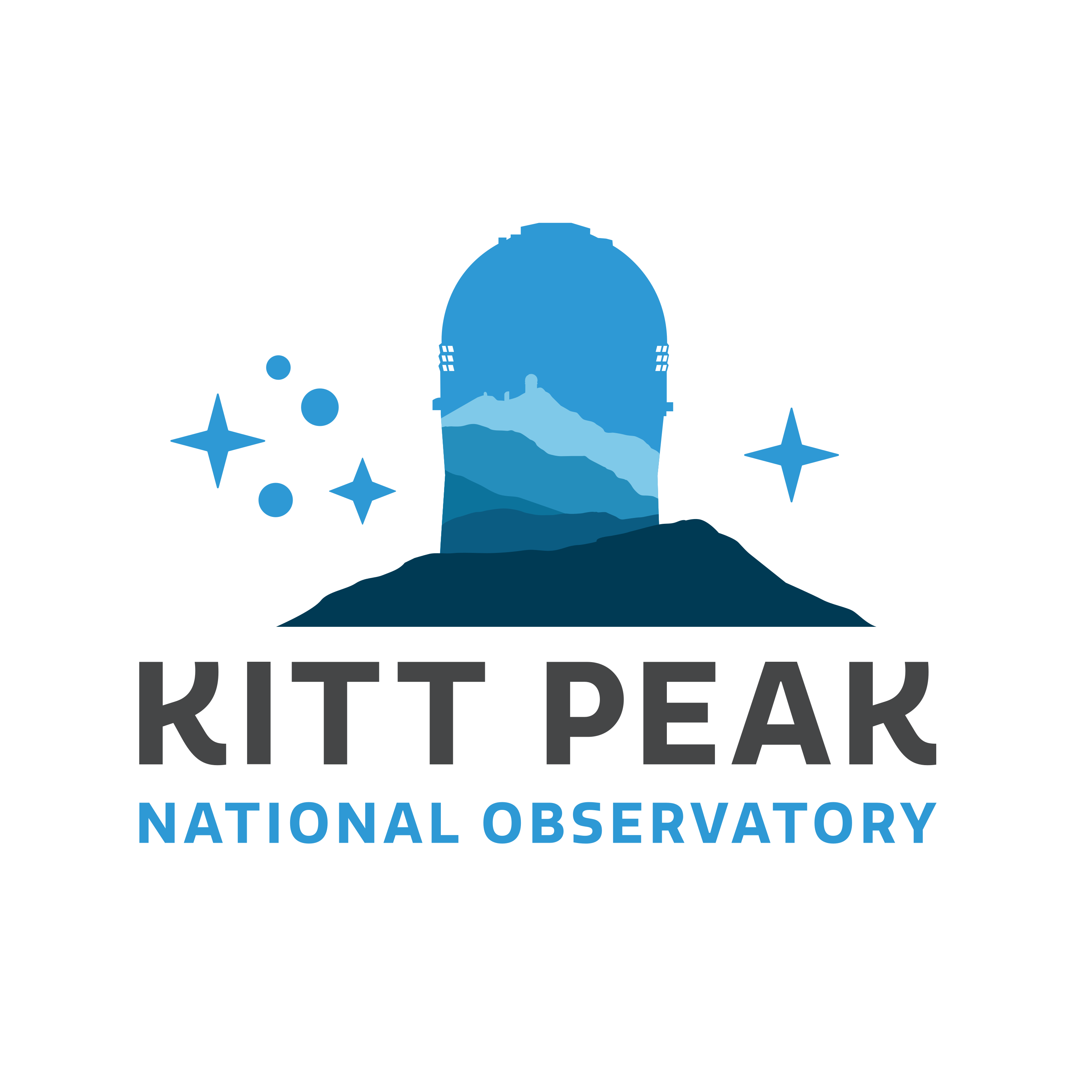Kitt Peak Visitor Center Welcomes 0.6-meter Shreve Telescope
New Visitor Center 0.6-meter Shreve Telescope elevates popular public programming at Kitt Peak National Observatory
26 March 2025
The Kitt Peak Visitor Center at the U.S. National Science Foundation Kitt Peak National Observatory (KPNO), a Program of NSF NOIRLab, welcomes the newest addition to its public telescope collection, the 0.6-meter Shreve Telescope. The telescope was part of a generous private donation from the late advanced amateur astronomer Gary Shreve, of Brisbane Valley Observatory in California. It has been installed in the Visitor Center dome enclosure, where it replaced an older, less capable 0.5-meter telescope.
The Shreve telescope's optical design, a Ritchey-Chrétien Cassegrain, features hyperbolic mirrors designed to eliminate visual distortions. The telescope was made by Optical Guidance Systems and purchased by Shreve roughly twenty years ago. Additions to the scope were provided by Astronomical Consultants & Equipment, Inc. and include motorized guidance, a filter wheel, and a mechanical dust cover. With a field of view nearly the size of the full Moon, the 0.6-meter is a worthy upgrade for the Visitor Center and the public nighttime observing programs that it hosts.
“This new telescope is a gift to every guest who travels up our mountain with a sense of adventure,” says Peter McMahon, Kitt Peak Visitor Center Operations Manager. “From now on, we’ll be seeing distant celestial objects — like star clusters, planets, and nebulae — every evening with the greatest clarity our guests have ever experienced. We are saddened that Gary did not live to see his telescope begin its new mission at Kitt Peak of inspiring visitors of all ages, but we will always be grateful to him for this donation and for the awe and joy it will bring to our guests for years to come.”
Recently, two KPVC evening guides used the 0.6-meter Shreve telescope to capture a stunning image of the January 13th lunar occultation of Mars, seen in this Image of the Week.
At KPNO, visitors can experience one of the largest and most diverse collections of research telescopes in any one place in the world. KPNO offers daily public day- and night-time tours to explore facilities, observe through telescopes, and even stay overnight to image deep-sky objects under clear, dark skies. KPVC is the only astronomy education center to offer an overnight observing program for members of the public, and with an upgraded telescope it is sure to be an unforgettable experience.
With the motto “Explore With Us,” KPVC welcomes all to experience the wonders of the cosmos, and KPNO is honored that Gary’s name is associated with this outstanding new addition to its facilities.
More information
NSF NOIRLab, the U.S. National Science Foundation center for ground-based optical-infrared astronomy, operates the International Gemini Observatory (a facility of NSF, NRC–Canada, ANID–Chile, MCTIC–Brazil, MINCyT–Argentina, and KASI–Republic of Korea), NSF Kitt Peak National Observatory (KPNO), NSF Cerro Tololo Inter-American Observatory (CTIO), the Community Science and Data Center (CSDC), and NSF–DOE Vera C. Rubin Observatory (in cooperation with DOE’s SLAC National Accelerator Laboratory). It is managed by the Association of Universities for Research in Astronomy (AURA) under a cooperative agreement with NSF and is headquartered in Tucson, Arizona.
The scientific community is honored to have the opportunity to conduct astronomical research on I’oligam Du’ag (Kitt Peak) in Arizona, on Maunakea in Hawai‘i, and on Cerro Tololo and Cerro Pachón in Chile. We recognize and acknowledge the very significant cultural role and reverence of I’oligam Du’ag to the Tohono O’odham Nation, and Maunakea to the Kanaka Maoli (Native Hawaiians) community.
Links
- See photos of the telescope’s installation
- Kitt Peak National Observatory Facebook post about telescope’s arrival
- Visitor Center 0.6-meter Telescope page
- Images of the Visitor Center 0.6-meter Telescope
- KPVC Tours & Programs
- Images of the Kitt Peak Visitor Center
- Images of Kitt Peak National Observatory
- Site map of Kitt Peak National Observatory
Contacts
Peter McMahon
Kitt Peak Visitor Center Operations Manager
NSF NOIRLab
Email: peter.mcmahon@noirlab.edu
Josie Fenske
Jr. Public Information Officer
NSF NOIRLab
Email: josie.fenske@noirlab.edu












